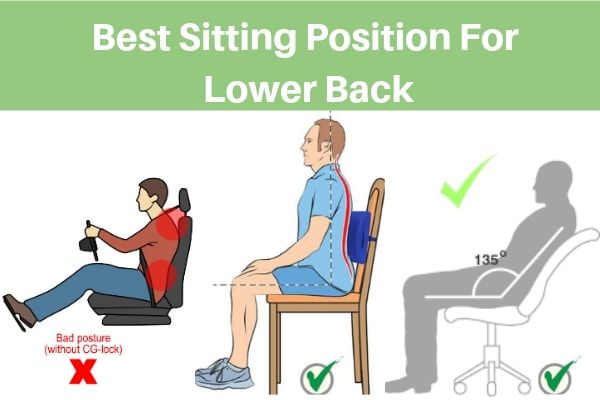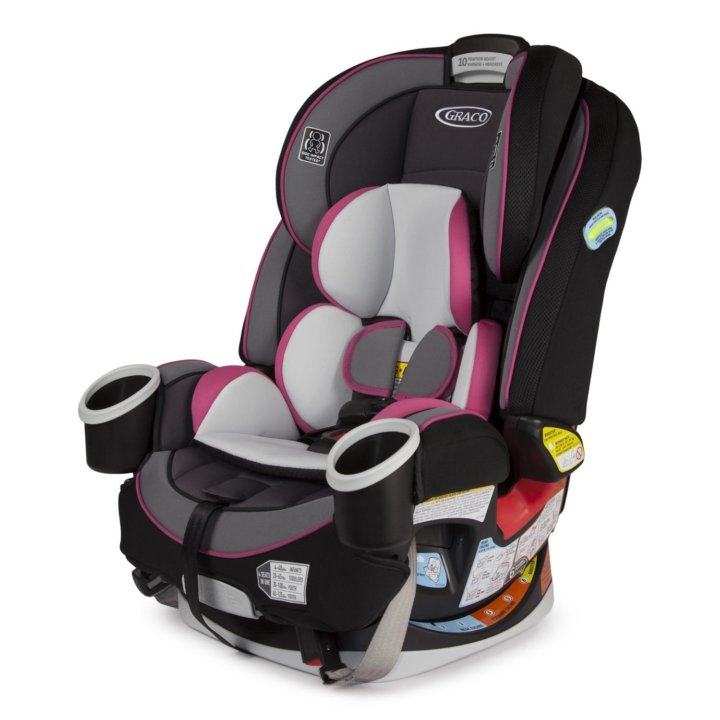Baby tries to sit up while feeding
Baby Want to Sit Up While Drinking from a Bottle
This post may contain affiliate links, which means that I may earn a commission if you make a purchase using these links at no extra cost to you.
Does your baby want to sit up while drinking from a bottle? Babies can be bundles of dramas, at times. You will want to feed them with a bottle, and there they are trying to sit up. And to think that they could scream when you try to lean them back is so disturbing. This makes bottle-feeding your baby quite a hard task to do.
But do not beat yourself, if your baby wants to sit up while drinking from a bottle. You are in no way alone, okay? Many babies do this, too. So, it is normal if you find that your baby does the same.
When babies want to sit up while drinking from a bottle, they are only trying to try out a new skill they have learned, and are curious about the surrounding world. While you should enjoy the fun, what you can do in the meantime is put a pillow behind her. That way, she is safeguarded from falling and hitting her head on the floor.
Bottle feeding your baby while they sit up is called upright feeding. Babies can be very well bottle-fed while sitting up. It is just that this posture is most ideal for older babies, who have developed a little more control over their bodies. If your baby belongs to this category, you can seat them up on your lap and allow their body to rest inside your arm, or against your chest.
Bottle-Feeding Postures and TechniquesAre you using a bottle as a supplement to breastfeeding or solely? There are certain feeding positions and techniques we think you should learn if you desire a better and healthier bottle-feeding experience. In this section of the article, we have analyzed different bottle-feeding techniques and positions that you could adopt. Brace up, and enjoy!
Bottle-Feeding TechniquesUpright Feeding
Upright feeding is the mode of feeding that happens when your baby is sitting upright. Like we have earlier pointed out, it is most ideal for older babies, who have better control of their bodies.
Like we have earlier pointed out, it is most ideal for older babies, who have better control of their bodies.
This type of feeding is especially beneficial for babies who have issues with acid reflux or gas, and the beauty is that it can be performed literally anywhere. The one downside to this is that your baby will not be facing you, and this makes bonding and cue-reading some sort of big deal.
Cradle Hold Feeding
Here is one of the more traditional bottle-feeding positions. In this type of feeding, your baby’s head is placed in the crook of your arm, and your hand is wrapped around his bum. What you will then do after this is, lift your elbow so that your baby is at a slight angle, with their head raised above their body.
The pro that comes with this feeding is that it prevents ear infections, and makes facial feeding cues easier to spot. Added to these facts is that it can be done in public. Your arms can get tired in a matter of 10-20 minutes, though, and that’s the only con.
Lap Feeding
Lap feeding requires that you are either lying down throughout or sitting down with your legs up and your knees, bent. Your baby is placed with its back pressed against your thighs, facing you. Your baby’s head is against your knees, and her feet on your stomach. The advantage of this type of feeding is that it comes with lots of bonding opportunities, and takes the stress from your feeding arms.
The seeming downside is that it is difficult to perform in public. So, you might need to always be at home to do it.
Angled Feeding
Angled feeding is pretty much like the cradle hold, except that you are not going to be using your arms to aid your baby’s weight. In place of using your arms, you use an angled feeding pillow. This angled feeding pillow keeps your baby snug in place against your body. The best time to go for this type of feeding is when your baby going through a cluster feeding frenzy – something that happens to both breastfed and bottle-fed babies alike.
Cue-Based Feeding
Cue-based feeding is a growing technique coming from hospitals and NICUs, predominantly for babies who are born before term or with some other feeding difficulties. Cue-based feeding can feature providing a better-controlled flow rate to help the airways of preterm babies, using an elevated sideway position coupled with swaddling, pacing the feeding, providing controlled support to keep the baby in an even-keel state, and preventing the movement of the nipple in the baby’s mouth.
For nurses and caregivers, the end goal of this mode of feeding is transitioning preterm and other high-risk babies to a position of full oral feeding. The state where babies do not need to rely on feeding tubes to eat but can feed perfectly from breast or bottle is what is called full oral feeding.
This type of feeding is not limited to preterm babies, but can also work for healthy and fully developed babies. Cue-based feeding as the name implies is looking out for cues in your baby: cues of hunger, cues of feeding difficulties, and cues of satisfaction. Practically, it is a kind of feeding predicated on signals from your little one.
Practically, it is a kind of feeding predicated on signals from your little one.
Paced Feeding
This mimics breastfeeding. It offers your baby control of the process and helps them know when they are full. This technique promises to help the baby eat more slowly and go all out for the milk. Here is how paced feeding works: your baby sits more upright and you tickle her lips with the bottle. Immediately your baby makes rooting cues, put the nipple in her mouth, and slant the bottle horizontally. With paced feeding technique, you are able to switch sides the way you would in breastfeeding.
Bottom Line
Does your baby want to sit up while drinking from a bottle? Above are different bottle-feeding techniques and positions you can adopt in order to improve your baby’s feeding experiences. Be sure to read and pick one that you think will not work only for your baby, but also for yourself.
Related posts:
When Do Babies Sit Up? (When to Be Concerned)
Following months of lying down or reclining in their seats, it’s common for parents to wonder, “When do babies sit up?” Since every child is different, an exact answer is tricky to give.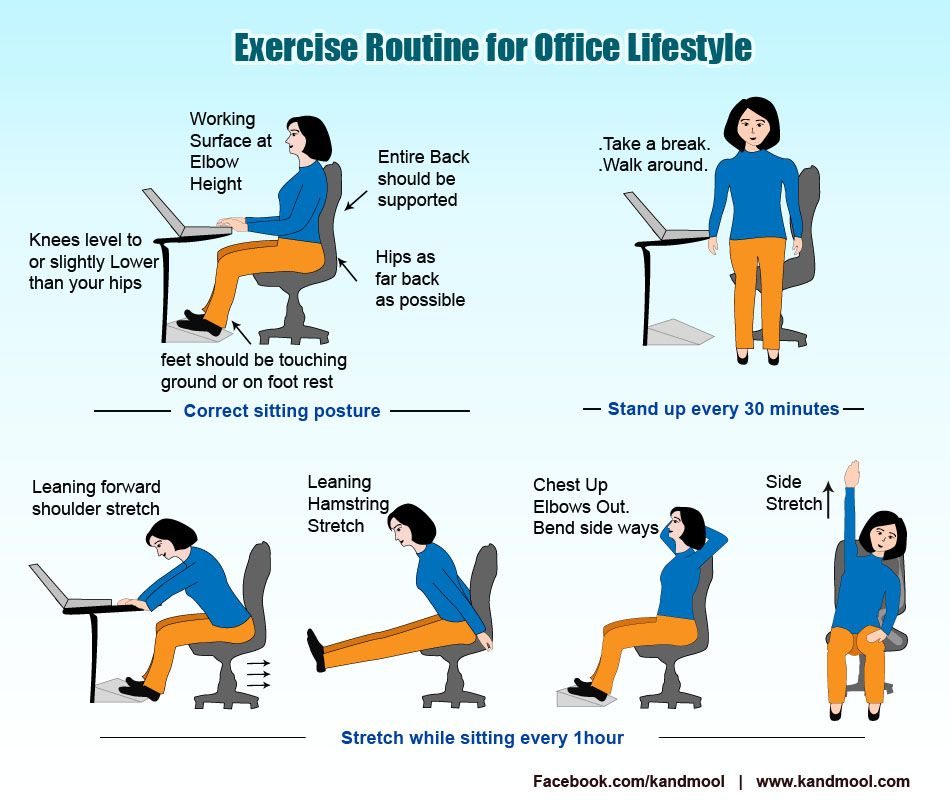
Sitting up independently is a significant milestone. Once babies achieve this, they can explore the world from a new angle, using their hands and arms to reach.
Table of Contents
- When Do Babies Sit Up?
- Signs Your Baby Is Ready
- How Babies Learn to Sit Up
- How to Help Baby Sit Up
- What Comes Next
- What If Baby Doesn’t Sit Up?
- Sitting Is Great
When Do Babies Sit Up?
The age that a baby sits up differs from child to child — some master the art of sitting rather quickly, while others require more time. Around 3 to 5 months, your baby might be capable of sitting while being supported by you or a seat. They will fall if you let go, though.
You may notice your 4-month-old showing interest in sitting by attempting to lift the head and shoulders while lying on the back. It can look as if they are doing “crunches.” This is a sign that your baby wants to look at the surroundings more, something that is difficult to do when lying flat.
By 5 months old, most infants learn how to place their hands in front with arms outstretched to hold themselves up in a sort of “tripod” position. Babies will typically sit up by themselves anywhere between the ages of 6 and 7 months (1). They must first be able to support their heads to avoid toppling over.
In the beginning, your little one will probably sit unsupported for a couple of seconds to a minute before falling.
As the muscles get stronger and balance is established, They can sit for longer periods of time. This usually occurs around 7 to 8 months. At this stage, your baby may topple over sometimes, simply because he’s bored of sitting.
If your infant was born prematurely, they may achieve this milestone a month or two later than a full-term infant. Your doctor can explain what milestones to expect for the corrected age. (2)
Signs Your Baby Is Ready
A sign of readiness to sit is when a baby can roll and support his or her head while upright.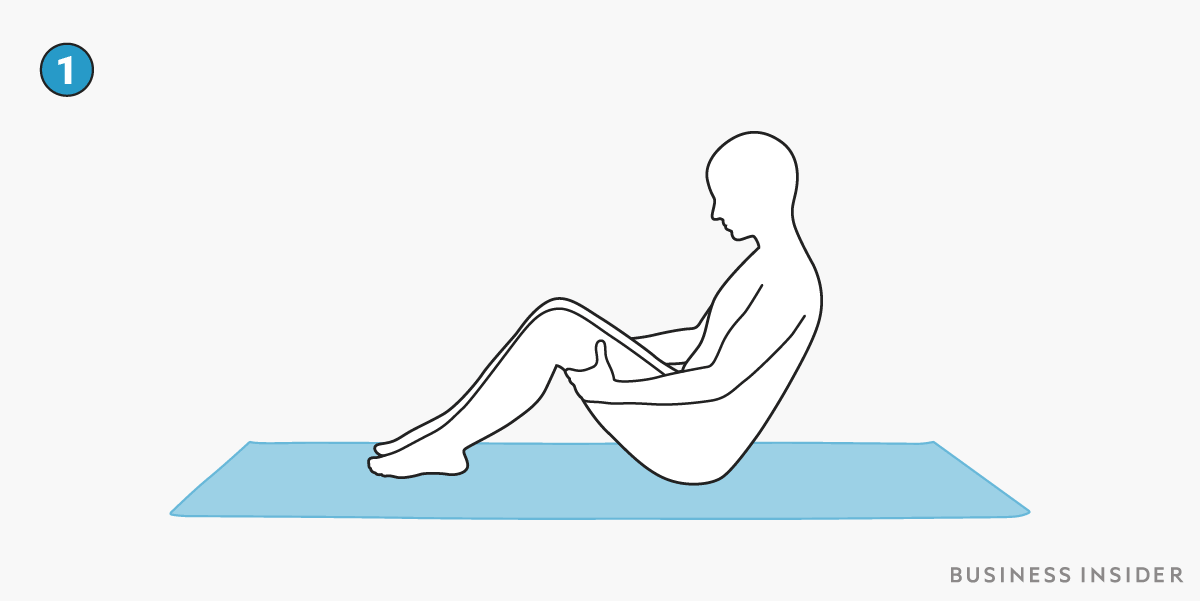 Most babies by age 4 or 5 months are still not capable of fully supporting the head when you pull them to a sitting position.
Most babies by age 4 or 5 months are still not capable of fully supporting the head when you pull them to a sitting position.
To check for readiness, grab both hands while they’re lying on their back and pull up slowly. While you pull them up, observe whether their head falls backward. If it does, you should wait — their heads must follow the upper body when you pull their arms.
How Babies Learn to Sit Up
You can place your baby in a sitting position practically from day one. However, independent sitting won’t happen until they have proper head control. The muscles in a baby’s neck require time to develop — most will have done this sufficiently by around 6 months.
At approximately the 4-month mark, your baby’s neck and head muscles begin to strengthen rapidly. You may notice during tummy time that your little one can raise her head and hold it. This is also when she’ll start to roll over, which is a required milestone to achieve before sitting. Most babies can roll from belly to back by 4 months, but may not roll from back to belly until 6 months of age.
As your baby spends time on the stomach, they will soon figure out how to use the arms to push off the ground. They may begin doing baby push-ups. All these mini-exercises help build the muscles required to sit up.
By around 5 months, some babies can sit momentarily by themselves. You should always be close to support them and to cushion a fall.
When their muscles are strong enough, babies will begin to figure out how to keep their balance while sitting. Your baby’s posture may resemble a tripod initially. She’ll be tilted forward with one or both arms in front.
At around 7 months, your baby will probably have established adequate muscles and balance to sit unsupported. Now it’s time for exploring — the hands are finally free to grab toys and other nearby objects.
Confidently sitting alone isn’t likely to happen until 8 months. By 9 months, your baby will also be able to switch from tummy to sitting by pushing up with the arms (3).
How to Help Baby Sit Up
1.
 Tummy Time
Tummy TimeTummy time is a crucial exercise in which to engage your baby as early as possible. It consists of placing your little one on his or her stomach for a few minutes at a time.
Doing tummy time will help develop your baby’s neck and shoulder muscles, while also promoting the development of motor skills. It builds the foundation your little one needs for rolling over, sitting up, and crawling (4).
Another benefit of this exercise is that it prevents flat spots on the head. Small babies have soft skulls, and when lying on their backs for prolonged periods, the bone moves and becomes flat (5). This can be corrected, but it’s best avoided. (6)
Tummy time helps your baby to discover a different view of the world. However, you should always place your baby on the back when sleeping or unsupervised. Otherwise, you could run the risk of sudden infant death syndrome (SIDS) (7).
For successful tummy time, always pick moments when your baby is awake and alert.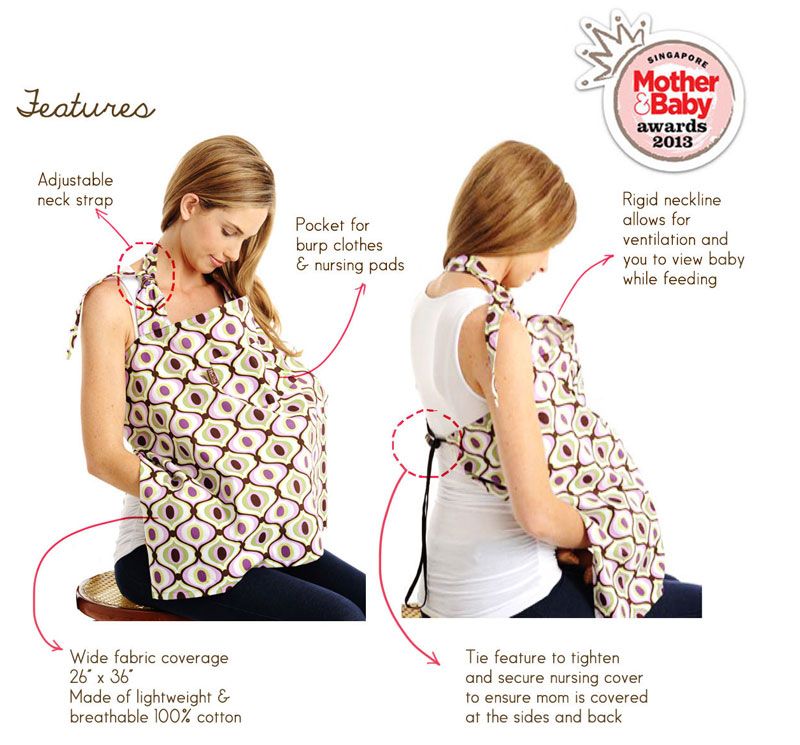 Avoid doing it straight after nursing — wait at least 30 minutes to give your baby time to digest their food.
Avoid doing it straight after nursing — wait at least 30 minutes to give your baby time to digest their food.
Place a blanket on a clear area on your floor, then gently roll your baby over so he is positioned onto the stomach. Let him stay on his belly for three to five minutes while you’re interacting with them. Aim to do this two to three times a day — as your baby gets older, do it more frequently and for longer stretches of time.
You can use some toys to encourage your baby to look forward and lift their heads. Place it just within reach to help them.
In practice, I begin recommending tummy time at the 2 week old well visit. Many parents do not realize that it is ok to start this young, and doing so improves neck muscle strength significantly. I also remind parents to continue the routine of tummy time at the 2 and 4-month-old visits.
A common parent complain that I hear is that their baby “hates tummy time.
” As soon as the infant is placed on the belly, he or she cries. To prevent long periods of crying and stressed out parents, I recommend doing belly time for only 1 minute but at every diaper change. In this way, the baby gets some belly time, but doesn’t have to stay in this position for very long. Also, I find that associating belly time with diaper changes prevents parents from forgetting to do it.
Editor's Note:
Dr. Leah Alexander, MD, FAAP
2. Prop Them Up
A good way to help babies work the muscles needed for sitting is to prop them up in a supported sitting position. You can use either a breastfeeding support pillow or a boppy pillow onto which your baby can lean. Your legs also work if you sit on the floor with your baby between them.
However, you shouldn’t rush this. If your baby isn’t showing signs of being ready to sit this way, don’t force it. It can be tiring and will inevitably make your baby cranky.
If your baby isn’t showing signs of being ready to sit this way, don’t force it. It can be tiring and will inevitably make your baby cranky.
Also, avoid propping your baby up in their stroller or car seat. Strollers that do not recline are not recommended under the age of 6 months (8). Such seats are constrained, inhibiting your baby from moving, rolling, wiggling, and reaching. Always sit on a mat or carpet on the floor.
3. Help Them Up
Once your little one can lift his or her head, you can try pulling him or her up from a lying position. While lying on the back, grab each hand and gently pull him or her up toward you. Almost all babies love this — it’s fun for them, especially if you make funny faces and noises.
Another benefit of this exercise is that your baby will familiarize himself with the movement required to sit up. As the muscles strengthen, you can begin to let go once they’re in a sitting position. Keep your arms close around them to prevent a fall and place lots of pillows for cushioning.
4. Try a Toy
Invest in a toy that’s designed to help your baby sit up. Items such as stationary play centers are excellent for 3- to 4-month-old babies. They provide ample support for your baby’s needs when starting to sit upright.
Many stationary play centers have lights and sounds, pull toys, or wheels babies can turn. These will keep them interested and distracted while exercising their sitting muscles. You can also find multi-stage booster seats, which help infants remain upright for playtime.
Colorful cubes, balls, or stacking toys are a great alternative to keep your baby interested while sitting. Once seated, play an interactive game by stacking toys or bouncing a ball (9).
What Comes Next
Sitting up unsupported is only the first step. Once your baby is ready and confident, she may begin to lean forward to balance on her hands and knees. As she gets the hang of it, your little one will probably get onto all fours and rock back and forth.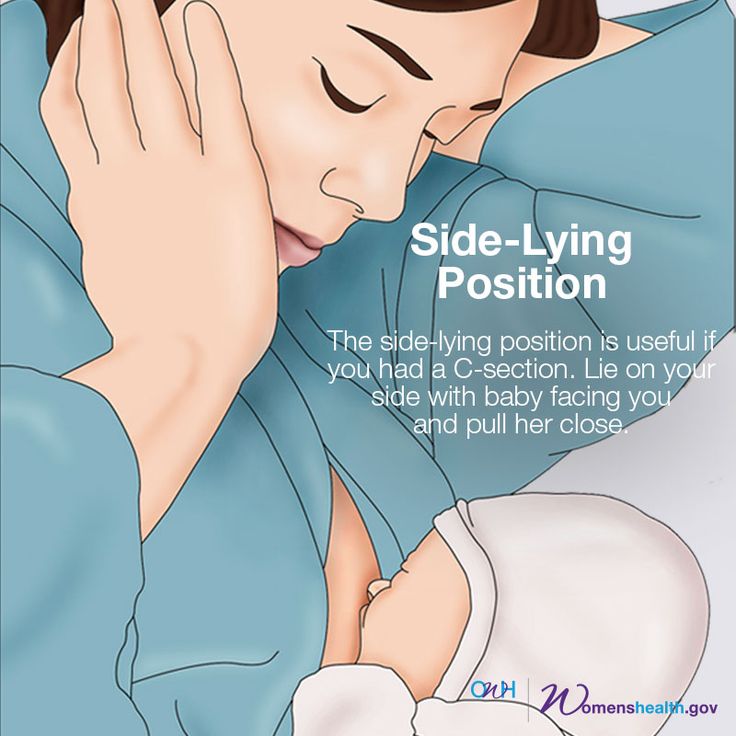
Then, the early stages of crawling come at around 6 or 7 months. You can expect to see some boot camp-like creeping across the floor, using the arms to drag their belly. By 10 months, your little one is likely to be a professional crawler looking to upgrade her skills to walking. However, not every infant crawls.
Some babies are more interested in trying to stand, and may completely skip the crawling stage. Signs of this are attempts to get onto the feet instead of the knees. At 9 months old, your baby may hold onto the side of the crib and pull up to a standing position. If so, the next stage is for him or her to “cruise,” taking steps while holding onto objects and furniture.
Once they reach this stage, it’s essential for you to babyproof your home. Even babies who are sitting can quickly get into mischief. Ensure there are no dangling cords or small items on the floor which they could swallow (10).
What If Baby Doesn’t Sit Up?
Timelines for milestones differ from baby to baby. However, if your baby can’t hold the head steadily by around 4 months, or sit unsupported by 9 months, consult your pediatrician.
However, if your baby can’t hold the head steadily by around 4 months, or sit unsupported by 9 months, consult your pediatrician.
That said, don’t panic yet — every baby develops differently — some are quick while others take their time. Always ask your baby’s doctor if you’re worried. Developmental delays are best solved when discovered early on.
Preemies
It’s important to remember that babies who were born prematurely are likely to reach milestones later than others.
Sitting Is Great
It’s not unusual for parents to wonder when their baby will sit up. We all want to be confident our babies are developing as they’re supposed to.
Although it varies, in general, most begin to sit up at around 4 to 7 months. Before reaching this milestone, babies must be able to support their head and roll over from stomach to back and vice versa.
You can help your baby’s development by doing lots of tummy time early on, and by propping the baby up or using a specially-designed toy. If you have any worries, always consult your pediatrician for guidance.
If you have any worries, always consult your pediatrician for guidance.
Feedback: Was This Article Helpful?
Thank You For Your Feedback!
Thank You For Your Feedback!
What Did You Like?
What Went Wrong?
Breastfeeding on demand
You can often hear from a nursing mother: "I feed on demand, my baby requires a breast every 3.5 hours." Or: “I have always fed on demand. In a year, we already had 1 feeding in the evening, and my child calmly refused to breastfeed. Before talking about the demand of the child, it is necessary to find out what modern women mean when they say - "I breastfeed."
Modern mothers consider breastfeeding necessary for feeding their baby. Just for feeding. Breast milk is food, the mother supplies the baby with the nutrients necessary for growth and development. When a baby suckles at the breast, he eats. Breastfeeding makes sense only as a process of supplying proteins, fats, carbohydrates, vitamins and microelements.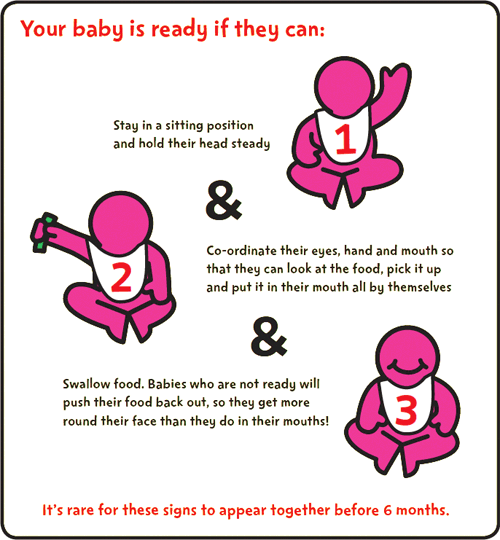
During suckling, the baby receives the nutrients it needs with mother's milk. This is the absolute truth. There is another unconditional truth, which is not given any importance in modern society, it is not taken into account and is not considered. Breastfeeding for a child is communication with the mother. We need to figure out how the child understands feeding on demand? Can he understand anything at all? Is there any difference for him how he is fed, for 15-20 minutes after 3.5 hours or in some other way?
What is on-demand feeding
On-demand feeding of a newborn baby means putting it to the breast for every squeak or search. Squeak and search movements in newborns, even as early as the second or third day of life, begin to appear much more often than after 3.5 or 2.5 hours. The need for attachments increases rapidly, and by the 10-12th day of life, the need to attach to a child may occur 15-16 or more times a day. Applications vary in duration. The baby can fall asleep and sleep while sucking for, for example, 1.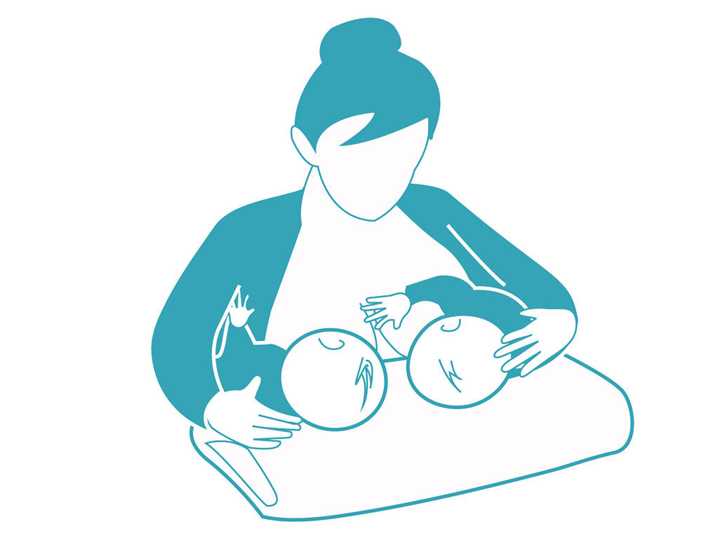 5-2 hours. Can release the breast after 1-2 minutes. And then ask her again. Why does a child need such frequent contact with his mother's breast?
5-2 hours. Can release the breast after 1-2 minutes. And then ask her again. Why does a child need such frequent contact with his mother's breast?
That's why. Being in the mother's belly, in a calm, familiar environment, listening to the noises of the mother's body, being in a warm, cramped, confined space, the baby sucked his fist, fingers, loops of the umbilical cord, swallowed amniotic fluid. Learned to suck and swallow. After birth, experiencing discomfort for any, the most insignificant reason, the baby tries to get rid of it. You can get rid of discomfort by getting into the usual conditions of a comfortable stay. The only place where the baby after birth can feel the sensations familiar to him is in the arms of the mother. The only familiar action is sucking. The only familiar taste and smell is the taste and smell of milk and lube in the areola. Milk and lubricant have an odor and taste similar to the taste and smell of amniotic fluid. Therefore, experiencing discomfort, the baby squeaks, or begins to look for an object to suck with his mouth. Ideally, it is immediately applied to the chest. The baby becomes warm, cramped, he hears the beating of his mother's heart, breathing, grumbling in the intestines, he sucks and feels the familiar taste and smell. If such an action happens constantly, the baby gains confidence, no matter what happens, he will solve all his problems with his mother. The place of comfort is now under the breast, and you can suck on the breast.
Ideally, it is immediately applied to the chest. The baby becomes warm, cramped, he hears the beating of his mother's heart, breathing, grumbling in the intestines, he sucks and feels the familiar taste and smell. If such an action happens constantly, the baby gains confidence, no matter what happens, he will solve all his problems with his mother. The place of comfort is now under the breast, and you can suck on the breast.
This whole process is biologically justified. A newborn child does not feel the feeling of hunger, this feeling is not formed in him. It will begin to form at about two months of age. How to feed a creature that does not experience hunger ?! How to encourage him to take some action to get food? This can be done only at the expense of some other incentives. This stimulus for the newborn is constant bodily discomfort, thanks to which he wants to suckle all the time! The most intense, frequent and prolonged sucking in infants is observed in the first two or three months of life. It is in these first months that the main weight gain of the baby occurs.
It is in these first months that the main weight gain of the baby occurs.
Feeding in the first month
Baby falls asleep with breast in mouth, sleeps sucking for a while. Falling asleep deeply, lets go of the chest. After sleeping for a while, he wakes up, and is applied on waking. After sleep, he can stay awake for some time, for example, an hour and a half. During wakefulness, he may feel discomfort 2-3 times, for example, from a completely natural desire to pee, and having called his mother for help, having kissed for a couple of minutes, he will do his deeds. Then he will want to sleep, feel discomfort and, kissing his chest, will again fall asleep sucking. After some time, he will wake up and attach again. Then again a little "walk". And after some time, he will fall asleep at the chest again.
The daytime naps of a one-month-old infant feeding on demand vary in duration and number. There can be 4-6 dreams during the day, and they can last from 5-15 minutes to 2-2.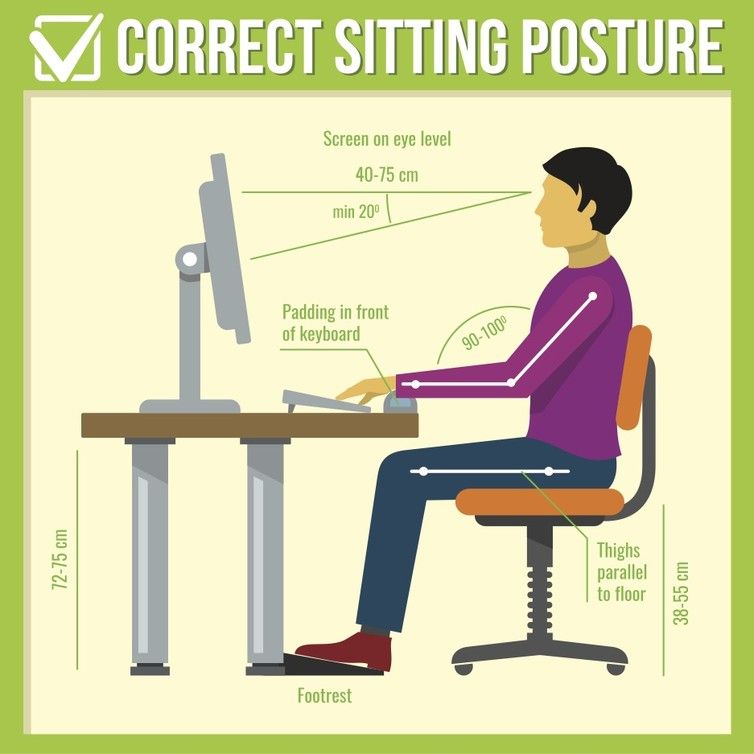 5 sometimes 3 hours. "Around" each dream, the baby is applied to the chest, and applied between dreams several times. At night, the child falls asleep at the breast. Usually in the early morning hours, he begins to fuss and apply. In the morning, he almost never fully wakes up. The baby sleeps, from time to time, sucking on his mother's breast. Waking up in the morning, the baby is again applied to the chest. If you count all the attachments that have happened in a baby of one month of age, then approximately 16-20 attachments are obtained. This is how a newborn human cub behaves if it is given the opportunity to behave in accordance with physiological and psychological needs, which, by the way, are genetically determined. The child of the first months of life does not separate his personality from the personality of the mother and from her breast. Mom and her breasts, and everything connected with them, are the universe of the baby and himself.
5 sometimes 3 hours. "Around" each dream, the baby is applied to the chest, and applied between dreams several times. At night, the child falls asleep at the breast. Usually in the early morning hours, he begins to fuss and apply. In the morning, he almost never fully wakes up. The baby sleeps, from time to time, sucking on his mother's breast. Waking up in the morning, the baby is again applied to the chest. If you count all the attachments that have happened in a baby of one month of age, then approximately 16-20 attachments are obtained. This is how a newborn human cub behaves if it is given the opportunity to behave in accordance with physiological and psychological needs, which, by the way, are genetically determined. The child of the first months of life does not separate his personality from the personality of the mother and from her breast. Mom and her breasts, and everything connected with them, are the universe of the baby and himself.
In most cases, a modern woman, being afraid to “accustom a child to hands”, strives to limit his requests for sucking. A pacifier and a bottle of tea or water come to her aid in this matter. They, too, can be sucked ... The need for sucking seems to be satisfied. But only the need for communication with the mother during suckling is not satisfied, the peculiar chain of mutual assistance and cooperation between mother and baby is destroyed, the formation of maternal affection and concentration is disrupted. Is the difference in the two actions noticeable to the reader: the baby cried, the mother took him, put him to her chest and started rocking him, or gave him a pacifier and started rocking the stroller, even with the words “Why are you crying, my sun?”
A pacifier and a bottle of tea or water come to her aid in this matter. They, too, can be sucked ... The need for sucking seems to be satisfied. But only the need for communication with the mother during suckling is not satisfied, the peculiar chain of mutual assistance and cooperation between mother and baby is destroyed, the formation of maternal affection and concentration is disrupted. Is the difference in the two actions noticeable to the reader: the baby cried, the mother took him, put him to her chest and started rocking him, or gave him a pacifier and started rocking the stroller, even with the words “Why are you crying, my sun?”
The modern woman who gives a pacifier and pumps a stroller is not a bad person deliberately harming an infant. She is simply in captivity of prejudices regarding the relationship between mother and baby. She does not know how to behave correctly, does not know what to do in accordance with the natural needs of the child. If you tell her what the child really needs, she will exclaim in horror: “What is it, don’t let him get away with?!” Indeed, the child of the first months of life must not be let off the hook. For a woman who does not know how to comfortably carry a baby, and who does not know how to feed him in various positions (sitting, lying, standing and even moving), this can be very difficult. Especially if she is not sure of the correctness of her actions.
For a woman who does not know how to comfortably carry a baby, and who does not know how to feed him in various positions (sitting, lying, standing and even moving), this can be very difficult. Especially if she is not sure of the correctness of her actions.
An action that should become automatic for the mother of a newborn: when the baby cries or shows other signs of anxiety, put the baby to the breast.
What's next?
The baby is growing. A fairly stable rhythm of daytime sleep begins to form in him, and a 3-4-month-old baby behaves quite differently from a newborn. Feeding on demand at this age looks something like this...
- At three months, the baby has 10-12 feeds during the day and 2-4 at night. There are frequent applications for a short time, but their number is reduced. There may be a long night break in feedings, about 5 hours, but this is very rare. Much more often the night break is 2.5-3.5 hours. By this age, the baby's body is noticeably rounded.
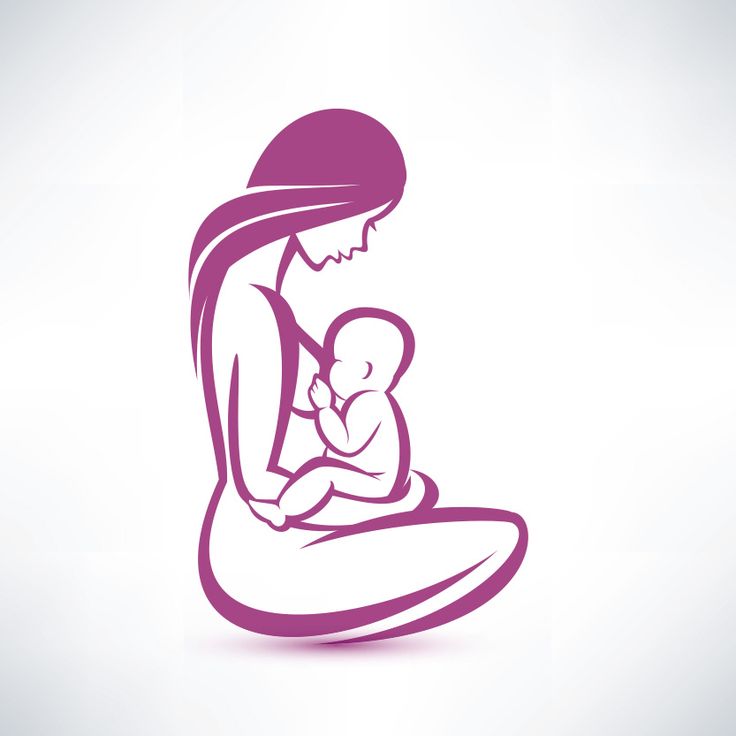
- At four months, the baby begins to breastfeed noticeably less frequently. The main feedings are associated with sleep: the baby suckles before bedtime, during awakening and during sleep, both daytime and nighttime. In this regard, he has a fairly accurate feeding regimen. And many babies stop breastfeeding when they wake up after daytime sleep, sometimes as early as 2.5-3 months.
- At five months, the baby has 8-10 daytime feedings and 2-3 nighttime, attachments as well as in the fourth month of life, are organized around dreams - the baby eats when going to bed and some babies suck during awakening.
- At six months, the feeding regimen changes. The most active sucking shifts to the last 2-3 hours before waking up from a night's sleep. The period of daytime wakefulness can be divided into two periods: in the morning, when the baby sucked during the night is rarely applied to the breast, and in the evening, when attachments become very frequent. In total, there can be 7-10 day applications and 3-4 night applications.
 At this age, the baby begins a period of acquaintance with new food - pedagogical complementary foods. Sometimes there are attachments associated with the introduction of complementary foods, the baby “washes down” samples of new food with mother's milk. But many children do not want to drink complementary foods. When complementary foods are introduced to an on-demand baby, it is never meant to replace feedings with complementary foods. This is practically impossible, because the main feedings of the baby are associated with sleep, and mother's breakfasts, lunches and dinners, during which the baby gets acquainted with new food, are located between the baby's dreams, during his wakefulness.
At this age, the baby begins a period of acquaintance with new food - pedagogical complementary foods. Sometimes there are attachments associated with the introduction of complementary foods, the baby “washes down” samples of new food with mother's milk. But many children do not want to drink complementary foods. When complementary foods are introduced to an on-demand baby, it is never meant to replace feedings with complementary foods. This is practically impossible, because the main feedings of the baby are associated with sleep, and mother's breakfasts, lunches and dinners, during which the baby gets acquainted with new food, are located between the baby's dreams, during his wakefulness. - At seven months, the frequency of application is about the same.
- At eight months, the feeding regimen changes. Since the baby shows high motor activity and is very busy exploring the surrounding space, in the daytime he forgets to breastfeed. In this regard, the number of daily feedings can be reduced to 6-8 times.
 The baby compensates for the reduction in daytime feedings by increasing the frequency and duration of nighttime feedings up to 6 times.
The baby compensates for the reduction in daytime feedings by increasing the frequency and duration of nighttime feedings up to 6 times. - In the second half of the year, babies who stopped breastfeeding when waking up after daytime naps recall this habit again. The baby’s daytime sleep in the second half of life, as well as in the region of a year and older, looks something like this: the baby falls asleep sucking, sleeps quietly for a while, for example 1-1.5 hours, then starts tossing and turning, fiddling, worrying, at this moment the mother lies down next to , gives him a breast and the baby can fill up 10-15-30 minutes sucking. Mom may well use this time for her own rest - lie down, read, while the baby sleeps while sucking. I know my mother, a lover of embroidery, who used this time specifically for embroidery ...
- Breastfeeding becomes more frequent at nine to ten months. In the daytime, this is 4-6 full feedings and about the same number of attachments for various reasons.
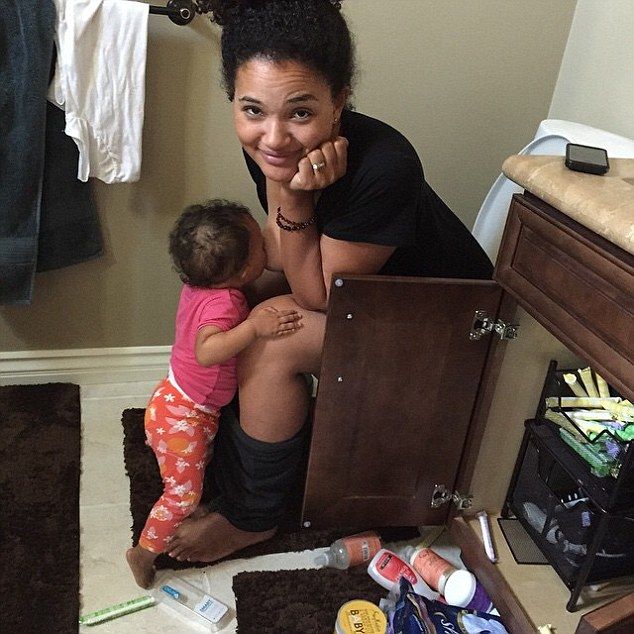 The baby has new reasons for attachment. If, during active actions to master the world, the baby fills a bump or gets scared, he calms down with his mother's breast. There may be situations when you can comfort the baby by sitting next to him and hugging him. At night, 4-6 feedings remain, the baby begins to suckle more actively in the morning between 3 and 8 hours.
The baby has new reasons for attachment. If, during active actions to master the world, the baby fills a bump or gets scared, he calms down with his mother's breast. There may be situations when you can comfort the baby by sitting next to him and hugging him. At night, 4-6 feedings remain, the baby begins to suckle more actively in the morning between 3 and 8 hours. - At eleven months, a baby can already have 2-3 complete complementary foods. Initiation to adult food in the mind of a child is not associated with breastfeeding: attachment to the mother's breast is something other than the desire to get enough of the product they like. As a rule, after the baby has eaten, he feels the need to attach himself to the breast. The number of daily feedings remains the same in the child, but the number of short-term attachments increases. There are active mid-morning feedings between 4 and 8 o'clock in the morning.
- At ten or twelve months, the baby, if he is already walking, can sometimes breastfeed every time he comes to his mother, i.
 e. about every 15-30 minutes. Attachments around dreams and night sucking persist. Therefore, if a mother says that a child suckles once or twice a day, this means that there is no feeding at the request of the child. There are restrictions imposed by the mother, with which the baby has come to terms. He treats breast sucking like food, sucks on a pacifier or a finger to fall asleep or soothe, or falls asleep just like that, without calming down.
e. about every 15-30 minutes. Attachments around dreams and night sucking persist. Therefore, if a mother says that a child suckles once or twice a day, this means that there is no feeding at the request of the child. There are restrictions imposed by the mother, with which the baby has come to terms. He treats breast sucking like food, sucks on a pacifier or a finger to fall asleep or soothe, or falls asleep just like that, without calming down. - At twelve months, the baby is applied in about the same way.
- At the age of one and a half years, there may already be one daytime nap, so there are fewer attachments associated with sleep. Preserved for morning sucking. The baby is very free with his mother's breasts. Sometimes it happens that he comes up to suck just for pleasure. For example, like this: he comes up, climbs on his knees, looks into his mother’s face, smiles, starts to swarm in his shirt, gets breasts, smiles at his breasts, sucks for 30 seconds and leaves.
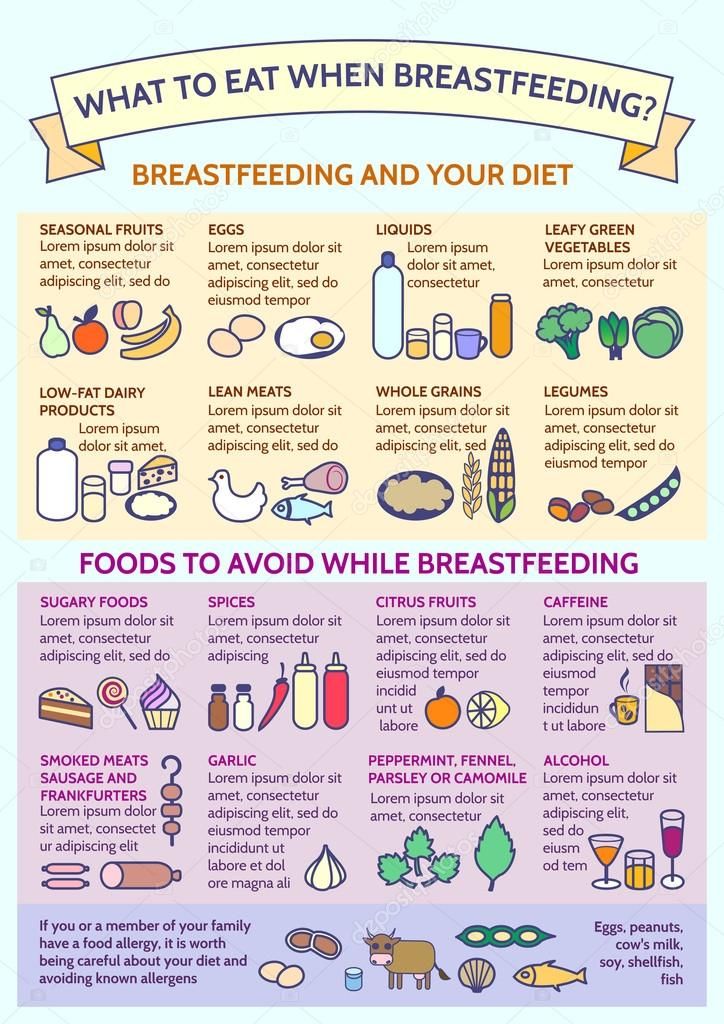
As for the number of feedings per day when feeding a child on demand, their number is almost never less than 12. A newborn has 12 or more attachments, mostly they are all associated with dreams. And a child, say 1.5-2 years old, can also have about 12 attachments, only 3-4 are associated with sleep, and the rest are short-term attachments for various reasons. I suggest to all mothers reading this text - do not count the application, do not notice their duration. Breastfeed your baby as often as he asks, when you feel the need to.
Moms who don't think about breastfeeding without looking at the clock may get the impression that when breastfeeding on demand, the mother can do nothing but feed the baby. This is wrong. After the birth of a baby, a mother begins another life, she is called life with a baby. That's all. The child is with the mother, not the mother with the child! Feel the difference! You need to be able to organize your life in a different way, in the first months, of course, the help of loved ones is very necessary. In the tradition of many peoples, it was customary for the first 40 days after childbirth to remove a woman from any housework and household chores, she was engaged only in a child. In some nations, objects that the mother of a newborn touched were considered “unclean”, therefore, they preferred to protect the mother from the rest of the household, allocating her a separate “corner” of the house, where no one bothered her and she did not interfere with anyone. Among the Slavs, such a restrictive custom was called a six-week. By 1.5-2 months, the rhythm of daytime dreams begins to form, and the baby has a kind of “regime”, the mother becomes more free.
In the tradition of many peoples, it was customary for the first 40 days after childbirth to remove a woman from any housework and household chores, she was engaged only in a child. In some nations, objects that the mother of a newborn touched were considered “unclean”, therefore, they preferred to protect the mother from the rest of the household, allocating her a separate “corner” of the house, where no one bothered her and she did not interfere with anyone. Among the Slavs, such a restrictive custom was called a six-week. By 1.5-2 months, the rhythm of daytime dreams begins to form, and the baby has a kind of “regime”, the mother becomes more free.
For a mother who can't imagine breastfeeding without looking back at the clock, and who is sure that the “right” baby is the baby lying quietly in her crib all the time, feeding on demand will be a complete hassle. It will be much easier for such a mother if she stops looking at the clock and ties the baby to herself with a large scarf or uses a patchwork holder (sling).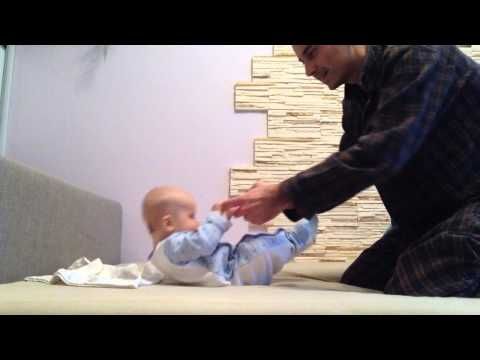 It will become easier for her if she stops running between the nursery and the kitchen, but takes the baby with her to the kitchen and carries him around the house with her, doing housework, in a box, a cradle, a special chair, if she tries not to put him off often, and pick up as soon as possible, postponing the baby only in case of emergency and not for long.
It will become easier for her if she stops running between the nursery and the kitchen, but takes the baby with her to the kitchen and carries him around the house with her, doing housework, in a box, a cradle, a special chair, if she tries not to put him off often, and pick up as soon as possible, postponing the baby only in case of emergency and not for long.
Breastfeeding is not the same as house arrest. In the conditions of modern society, it is possible to organize the exit of a nursing mother to work from about 6 months of age of the baby. If necessary, you can start working from the age of 4 months, but, of course, it is better not every day of the week and not full time. It is the responsibility of a breastfeeding consultant to help a mother organize her return to work.
Sometimes, when I advise mothers on breastfeeding, I suggest that they forget for a second that they are already living in the 21st century. I propose to return, for example, to the cave and ask what they will do if the child woke up at night, how to calm him down? If you are walking through the forest and trying not to attract the attention of predators, how to make the baby silent? If the child is thirsty, what will you give him? What is the baby used to, for thousands of years of its existence? To the fact that he sleeps on his mother while she wanders through the forest with a digging stick in search of roots, and wakes up when mother stops. Since mom stopped, then there is time to wake up and suck. Therefore, even now the child sleeps well, tied to the mother with a patchwork holder, wakes up when the mother, having done a few household chores, sits in a chair to take care of the baby.
Since mom stopped, then there is time to wake up and suck. Therefore, even now the child sleeps well, tied to the mother with a patchwork holder, wakes up when the mother, having done a few household chores, sits in a chair to take care of the baby.
Some mother, reading about the cave, will be offended, saying that she is a civilized creature. But please think. Man, mother's breast and mother's milk have been created by evolution over millions of years. They are made for each other. Baby food has created progress and more recently. The skills of motherhood and breastfeeding have also been lost by our society quite recently. A person is not physiologically adapted to artificial feeding and a pacifier. The mother's breast will not produce enough milk at 6-7 feedings per day. Nature did not know, when creating man as a mammal, that the time would come when the need for breastfeeding would be satisfied by some kind of pacifiers and nipples.
Changes that occur during the formation of the personality of a child who did not have full contact with the mother during prolonged breastfeeding are noted by modern research by psychologists and sociologists. These are changes with a minus sign. It would be better if they were not, these changes.
These are changes with a minus sign. It would be better if they were not, these changes.
Breastfeeding is not only important for the baby, it is also important for the mother. During on-demand feeding, the woman's feelings change, a stronger attachment to the baby is formed, the woman becomes more sensitive to the needs of the baby. Deeper affection and understanding are not only preserved in infancy. They persist for life. For clarity, imagine what happens to a woman’s feelings if she tries to “withstand” a child, endures his crying, anxiety. What happens to a woman if she uses the recommendation from one very popular parenting book: "Go to the child if he cries for more than 15 minutes"? Speaking in abstract terms, humanity is interested in reviving the practice of breastfeeding. The revival of this practice is impossible without mothers realizing the true reasons for the child's need for attachment to the breast.
Lilia Kazakova, pediatrician,
Head of Lactation and Child Care Counselors
When baby starts to sit and how to help him
March 31, 2020 Likbez Adviсe
Most likely, a significant event will happen closer to 6 months. But it is not exactly.
But it is not exactly.
How to understand that the child is ready to sit
Children are born weak: their muscles at first cannot keep the body upright. But every day they develop and become stronger.
The first sign that the child will soon learn to sit is the ability to confidently control the position of the head.
The fact that the baby has learned to hold his head upright and turn it in different directions means that the muscles of his neck and back are sufficiently strong. As a rule, this skill is acquired at the age of 5-6 months. Before the ability to sit down, holding vertically not only the head, but also the back, there is literally one step left.
Now reading 🔥
- How Supermarkets Trick Us: 10 Tricks You Should Know
When Baby Starts Sitting
Most babies start to sit confidently around 6 months of age. Although the boundaries of the norm, as often happens, are rather blurred - someone is making attempts as early as 4 months, and someone is closer to 7.
True, sitting does not mean sitting down. Most likely, at first you will have to help your son or daughter into the right position (do not do this before the child learns to hold his head!).
Sit your baby in such a way that he has support. For example, surround him with pillows. Or sit in a chair for feeding - but just make sure that it does not fall out.
Even children who seem to have mastered sitting often tip over in the first few weeks after learning a new skill. Sometimes - simply because they have become uninteresting in maintaining an upright position. Keep this in mind and do everything so that the child does not hit his head when falling.
By the age of 7–8 months, almost all children sit up on their own from any position - lying on their back, stomach, side - and confidently maintain balance with an upright back.
Find out 👶
- When the child starts to roll over and how to help him
What to do if the child does not sit
First of all, don't worry. The boundaries of the norm are wide, and if your child refuses to keep his back upright even at 6-7 months, he has every physiological right to do so.
The boundaries of the norm are wide, and if your child refuses to keep his back upright even at 6-7 months, he has every physiological right to do so.
Worry is justified only in the following cases:
- if by about 4 months you have not noticed even attempts to raise your head and hold it upright;
- if the child holds his head, but does not try to raise himself on his hands from a position on his tummy;
- the baby is already 9months, but he still hasn't learned to sit without support.
However, even lagging behind these key “reference points” is not yet an indication that something is wrong with the child. Children develop individually. And for example, those of them who were born prematurely may be slightly behind in development compared to their peers. In any case, the pediatrician will give you more accurate information.
Study the question 😴
- How much sleep should a child have
How to help your child sit and sit
The ability to sit is directly related to how strong the back and neck muscles are. Therefore, if you want to speed up the process, take the time to train.
Therefore, if you want to speed up the process, take the time to train.
1. Lay the baby on his stomach more often
In this position, in order to see what is happening around, he will have to raise his head and shoulders, leaning on the handles. This is a great workout for the back muscles.
To prevent your child from getting bored during exercise, arrange colorful toys around him or place a mirror in front of him. Babies at the age of 4-5 months are already inquisitive and ready to spend a lot of time studying new objects and their own face.
2. Show your child how interesting the sitting position can be
To do this, sit the baby on your lap so that he leans back against your stomach and chest, and show him toys, read books, do movements (for example, “box-box !”) with his handles, stroke the cat together or sort out the pebbles on the table. An interested baby will try to keep his back upright, and this will strengthen his muscles.
3.
